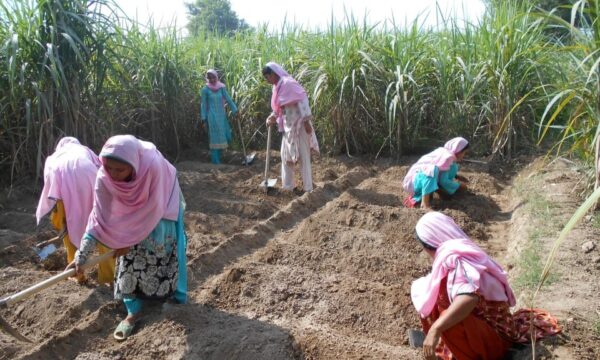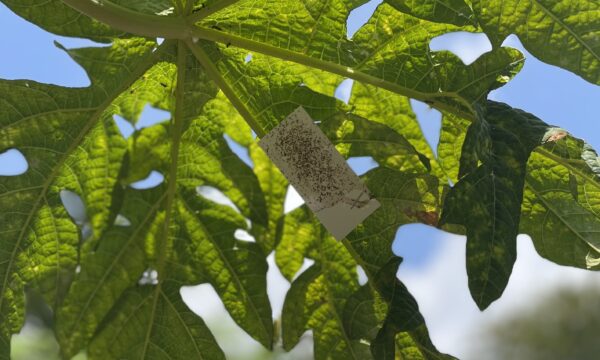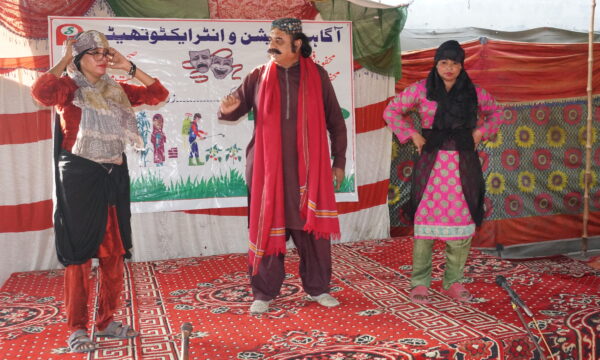This article was originally published on the CABI BioProtection Portal blog. Visit the original blog post here.
Biological control (or ‘biocontrol’) is the use of living organisms and naturally sourced (or nature-identical) compounds to control pest and disease populations.
The IBMA (International Biocontrol Manufacturers Association) defines biocontrol products as:

Tools that originate from nature, that have a low impact on human health and the environment and are used to manage pests, weeds and diseases.
The approach has been used successfully for over 100 years to manage the spread of pests, protect crops and restore balance to ecosystems and habitats.
Biological pest control as a natural alternative to pesticides
Biological control takes natural technologies and uses them to control pests in an environmentally safe way. It can, when used correctly, enable growers to reduce the use of synthetic chemistry which can have a devastatingly negative impact on humans, wildlife, soil health and crop production.
Some pests are invasive species or non-native pests – species that have been moved from one place to another without their natural enemies to control them, meaning they spread unmanageably. At CABI, biological control has been proven as an effective way to control invasive species or non-native through a method called Integrated Pest Management (IPM).
What’s the goal of biological pest control and who should use it?
The goal of biocontrol is to protect growers from unwanted pests and diseases on their plants whilst not endangering humans, harming wildlife or promoting pest resistance. It might be used as a quick attack method or as a prolonged build-up of immunity in the growing system. It’s also highly suited to people who are interested in organic and sustainable farming.
Why is biological pest control needed?

Biological control methods are rising in popularity due to the safety (environmental, wildlife and human) and pest-resistance issues surrounding traditional chemical pesticides.
In addition, the rise in popularity of low residue and/or organic foods from consumers has resulted in an increase in more natural methods of pest control being sought.
Reduce synthetic chemical inputs
Synthetic chemical pesticides can have detrimental effects on a variety of factors in agriculture. They can disrupt soil life which then limits basic processes of plant growth and vigour, they can harm wildlife in and around the farm and pollute watercourses.
Human life can also be affected by synthetic chemical pesticides, especially the more toxic ones – directly through exposure on the farm or contamination of drinking water and indirectly when pest resistance causes crop losses, affecting livelihoods.
New pests and diseases
Increasing trade and travel between countries has resulted in non-native species landing in foreign locations, wreaking havoc on delicately balanced native ecosystems. The natural predators, pathogens, competitors that would normally keep the pests and diseases in check at home are lost, giving the invading pest a huge unfair advantage over its neighbours.
What are the different types of biological pest control?
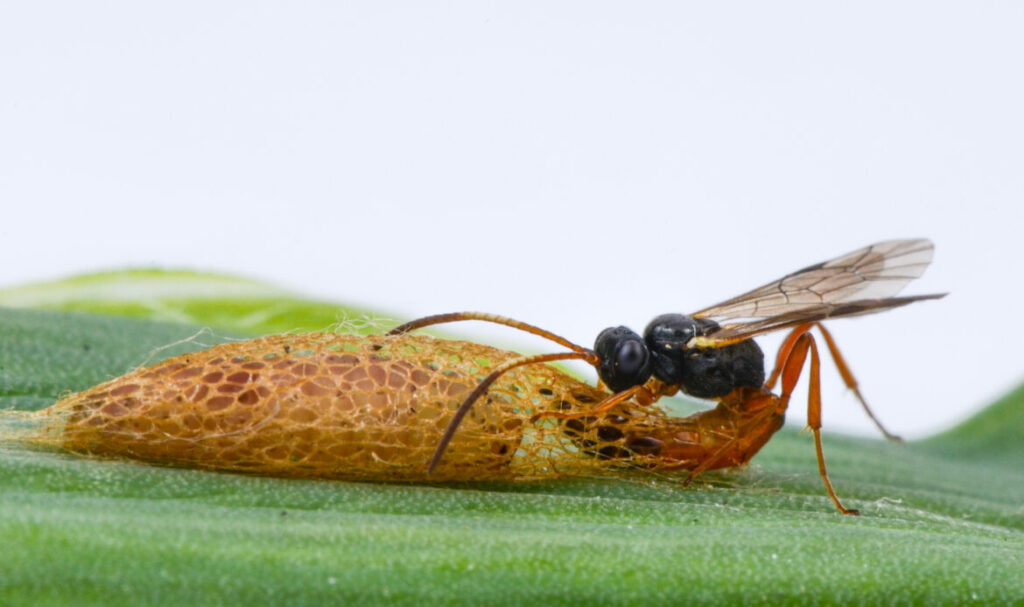
There are several different strategies or types of biological control: augmentative, classical (importation), and conservation.
Augmentative biological control
Augmentative biological control involves releasing natural enemies of the pest, including microorganisms, natural substances, predatory insects and mites, that can kill or suppress pest and disease populations.
The release can be small but consistent over or across seasons (inoculative), or a larger release looking for more of an immediate impact (inundative).
Classical biological control
Classical biological control – also called importation biological control – is the introduction of an exotic organism to control pests in an area that has been invaded.
The aim is not to eradicate the invasive insect, but to bring its density below a suitable ecological or economic threshold.
CABI – the organisation that manages the CABI BioProtection Portal – has a rich history of classical biological control. It investigates potential biological control agents for various invasive species globally. Its work has included releases of the biological control agent Diadromus pulchellus, a wasp species used to control the invasive leek moth, Acrolepiopsis assectella, in Canada.
Conservation biological control
Conservation biological control is the preservation – or conservation – of natural enemies that already exist in a given environment, controlling a pest population. This might be considered one of the most straightforward strategies or types of biological control as the natural enemies are already doing their job. The aim of conservation biological control is to maintain the biological control agent.
What are the different biological control agents?
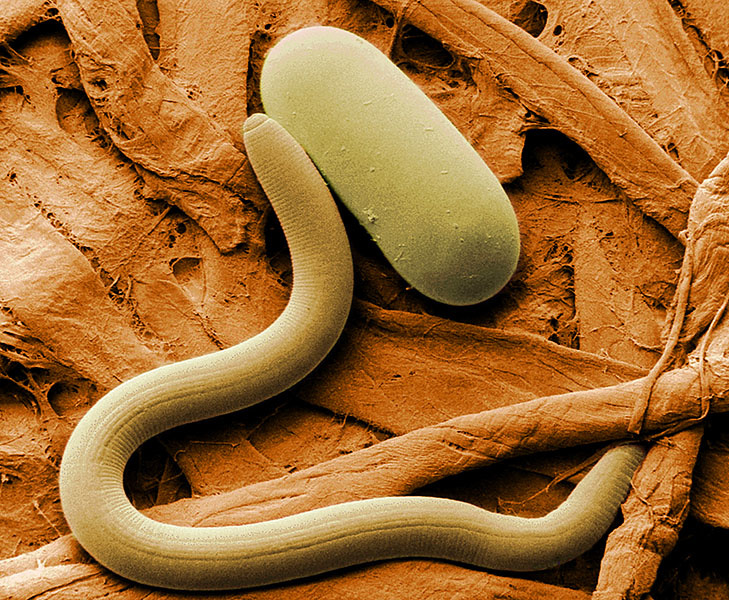
There are various types of biological control agent including microbials, natural substances, invertebrates (insects, mites, nematodes) and semiochemicals. All of these can be used to disrupt, deter or kill pests and diseases attacking plants.
Microbials
This group contain bacteria, fungi, viruses and other microorganisms that have the capacity to kill pests or outcompete and prevent diseases. Microbials have been mass-produced and registered as plant protection products for a range of pests and diseases around the world.
They relate to a pest or disease control method that contains microbes or microorganisms – very small living things.
Natural substances
Natural substances are made of components, including natural chemicals, that originate from nature and have antimicrobial, insecticidal or pest repellent activity. They might be obtained from plants, animals, microorganisms, though not exclusively; they can also be synthetic copies to their original form.
Semiochemicals
Semiochemicals are message-bearing compounds produced by an animal or plant that can be used to change and disrupt a pest’s normal behaviour.
They can be a pheromone or other chemical that sends a signal from one organism to another to modify the behaviour of the recipient.
Macrobials
Macrobials, or sometimes called invertebrate biocontrol agents, include insects, nematodes and mites that when released will parasitize and/or feed on pests.
Beneficial parasitoids, such as parasitoid wasps, can be used as biological control agents. They lay their eggs inside the eggs of pests, preventing the pests from hatching.
In 2021, CABI and Koppert Biologicals Systems Ltd in Kenya undertook a project to manage the tomato pest Tuta absoluta in Kenya using, among other things, the predatory mirid Macrolophus pygmaeus (known as MIRICAL).
The advantages of biological control
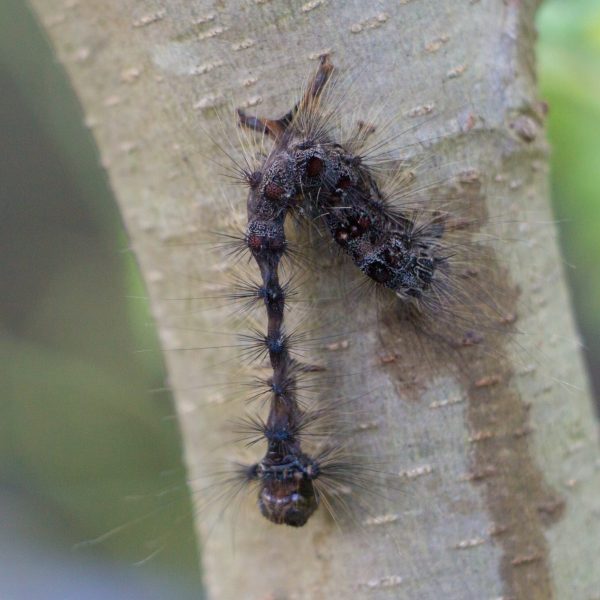
A caterpillar on a tree which has a thin upper half and a normal bottom half due to a virus
A gypsy moth caterpillar infected with the nuclear polyhedrosis virus. Image from David Cappaert, Bugwood.org
Targeted
When using a biocontrol method, it is selected due to its specific ability to combat the particular plant pest or disease, resulting in a high success rate.
Sustainable
The use of natural substances in biological control methods means it is highly unlikely there will be adverse effects to people, wildlife or the environment. This makes it a viable long-term solution that can be implemented in all types of growing such as farms, private gardens and greenhouses.
Cost
Natural products can sometimes be sourced at a lower price than synthetic chemical pesticides. But also, over the longer term, by promoting better soil health and avoiding repeated applications of failing/resistant chemical pesticides, biologicals can become very cost-effective.
With classical biological control this can be a permanent, self-sustaining solution. Once implemented there is no need to re-apply.
Safety
As biocontrol methods are made from material sourced from nature, they are unlikely to have any dangerous side effects. Unfortunately, side effects from some of the more toxic chemical pesticides are common including those that can affect people, plants and ecosystems both acutely (short-term) and chronically (long-term).
Resistance
Biological controls bring new modes of action compared to their chemical counterparts, which slows down the rate of pest and disease resistance, bringing it to manageable levels. Also, scientists are continuously looking for new organisms and new modes of action to be ahead of the game.
The challenges of biological pest control
Storage
Due to the ‘live’ nature of biocontrol methods, they often need appropriate storage facilities, such as refrigeration in order to keep the components alive and usable, which some growers may not have access to. However, in these cases an alternative biocontrol method, which does not require specific storage means could be sourced.
Education
As a relatively new method of pest control, some growers may not have the knowledge they need to properly implement biological control. Or, they may prefer to stay with methods they have previous tried.
Saying this, biocontrol products will always come with labels and detailed instructions for how to use them. Plus, advisors (where available) will be able to give good tips on how to use the products to ensure efficacy.
User education is an issue that CABI actively work to improve, including on projects such as the CABI BioProtection Portal and the Plantwise Plus programme.
Related News & Blogs
“Use of any pesticide comes with some risk, but this risk can be reduced”
Pesticides are a widely used pest management option. However, if applied incorrectly, they can pose serious risks to human health, ecosystems, and food safety. From farm workers and consumers to pollinators and waterways, the impacts of unsafe pesticid…
30 June 2025

